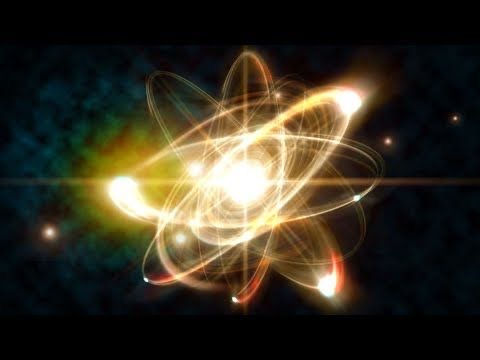China restrains the growing costs of nuclear power construction - what can other countries learn?
- Юджин Ли
- Aug 7
- 4 min read
Strengthening rules and internal supply chains can be the key to making nuclear energy more economically viable.
Again, the world is on nuclear energy. The United States seeks to quadruple its nuclear capacity by 2050, and more than 30 countries have pledged to triple its global capacity by the middle of the century. China is building and planning more than 30 reactors, and France has announced plans to build 14 reactors. Technology giants, including Amazon, Google and Microsoft, are also investing in nuclear energy to power their energy-intensive data centers and reduce carbon emissions.
The main problem remains: is it possible to develop at managed costs? Historically, the industry has faced "the curse of cost escalation. The construction of more nuclear reactors led to higher rather than lower costs per watt, hindering their economic viability. On the contrary, for solar and wind energy, mass production and sustainable technological improvements have led to a reduction in costs.
The cost of building nuclear power plants may increase due to the lack of standardized structures, growing costs for materials and labor, changing regulations and technical difficulties7. But is this escalation of costs inevitable? Here we show that individual rules and policies can reverse the trend. Decades of nuclear energy development in China demonstrate that the cost of construction can be reduced by combining stable rules and efforts to strengthen domestic supply chains.
China's success in containing costs
Over the past two decades, China has been the main country, having significantly and consistently expanded its nuclear fleet to 58 operating reactors in 2024. Since 2022, the government approves about ten new reactors every year, which puts China on track to surpass the United States and become the world's largest nuclear power capacity holder by 2030. State research centers have set the goal of a five-point study of China's current nuclear potential by 2050.
We have collected and analyzed a set of data on the cost of construction of nuclear power plants in China, taken from a wide range of publicly available sources.
We focus on the cost of construction, because operating and fuel costs are relatively low and remain stable.
Our conclusions are amazing. While construction costs increased significantly between the 1960s and 2000s, about tenfold in the United States and almost doubled in France, they halved in China by the early 2000s and have remained largely stable since then.
Various strategies were used to reduce technological costs, such as the construction of larger plants for scaling efficiency and the use of accumulated experience. But they alone cannot fully explain the cost reduction trend observed in China. The country also managed to contain costs through the strategic development of internal supply chains, a stable regulatory framework, state-supported incentive policies and effective construction management.
A key factor in reducing costs was China's deliberate efforts to build domestic capacity in the field of civil nuclear energy, which developed in three stages. From the 1990s to 2005, China imported foreign reactors for immediate deployment, gradually producing simple, conventional components domestically and using Chinese civil engineering and construction firms to reduce costs. At the same time, he began to research and develop his own reactor design based on French technologies.
Between 2005 and 2010, these production localization efforts advanced and included more complex, safety-critical components, such as reactor cores. China increased its capacity by building about 30 reactors using two types of models developed domestically. After the nuclear disaster at Fukushima in Japan in 2011, China accelerated the introduction of advanced safety features by cooperating with partners from the United States and France, while developing its own advanced reactor models.
Replacing expensive imports with domestically produced components significantly reduces costs. Some Chinese-made nuclear components, such as tubes, ring taps and charging pumps, cost half as much as their imported counterparts. However, for countries that import their nuclear technologies, the creation of an internal supply chain should be strategic. For example, South Korea has adopted a similar approach to China, which has led to cost reductions. On the contrary, around the 1980s, France deviated from the proven reactor design in the United States in favor of the national version, which hindered standardization and led to a sharp sharp cost of construction costs.
China's regulatory and political environment also play an important role. Consistent, state-supported industrial policy ensured stable electricity tariffs and low-interest financing of the Company's state nuclear energy. Its centralized nuclear management structure helps to ensure regulatory stability and coordinates the standardization of reactors throughout the country.
China's vast and growing electricity market provides confidence in long-term demand and encourages investment in domestic supply chains and nuclear energy workforce. The country's high productivity and its ability to quickly hire, produce and improve quickly10 made it possible to effectively manage projects. As a result, reactors in China are usually built in five to six years - about half the time it takes in France or the United States.
Harmonization of policies and standards
To begin the further development of global nuclear energy, efforts must go beyond today's aspiration declarations. As Chinese experience shows, specific, long-term commitments in the field of nuclear energy are needed along with national goals in the field of clean energy. Such obligations should be supported by stable rules, government subsidies and financing instruments, as well as long-term price certainty through mechanisms such as electricity purchase agreements - contracts between the electricity supplier and the buyer at an agreed price.
The research community, industry and governments must work together to better understand the complex relationship between component standardization, supply chain localization and regulatory oversight. This should be based on more transparent data, empirical data and world best practices.
A stable, coordinated security and licensing system is essential to reduce regulatory uncertainty and gain public support. Safety remains of paramount importance for nuclear energy. Although accidents have become less often, the threat of disaster on the scale of Fukushima persists. Such an event can disrupt nuclear ambitions at a crucial moment for climate action.
At the international level, countries exporting nuclear technologies should cooperate with importing countries to identify components that can be produced locally and invest in workforce training. The International Atomic Energy Agency can support the elements by sharing best practices and optimizing regulatory approaches, ensuring timely and cost-effective deployment while maintaining safety standards, ensuring that nuclear technologies are used only for peaceful purposes and radioactive waste management.
As countries are in a hurry to expand their nuclear potential, they must combine accessibility with security, scalability, investor confidence and public trust. Without this, nuclear energy will remain an expensive bet that the world cannot afford.


















Comments